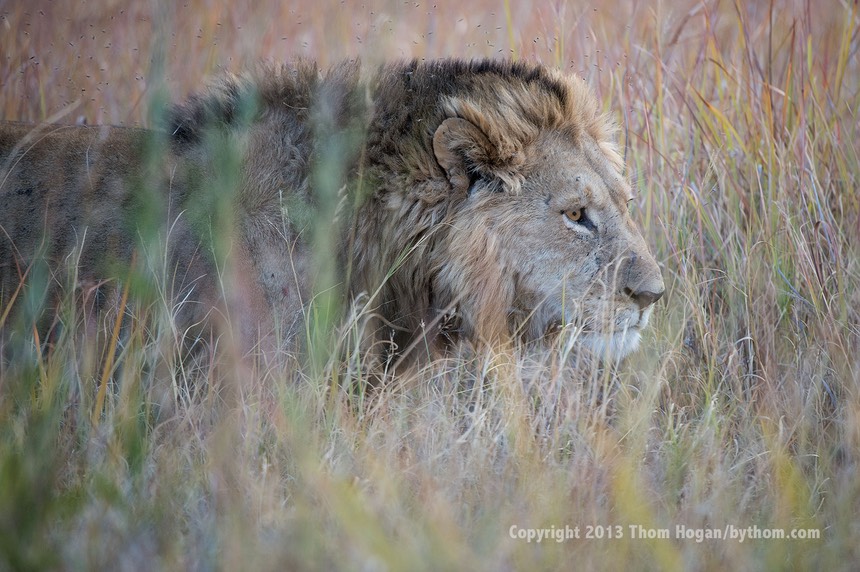
You're going to see these three birds again in the Botswana 2013 Workshop blog, but I want to do something a little different with the teaching point this month and illustrate how you can get yourself into trouble with your photographic decisions, including ones you make before the shot. There are a number of problems with this image, and they're all caused by me. (And yes, there are three birds.)
First, some context: we'd been shooting these birds for awhile. They were pretty much glued to the tree while we were photographing them and discussing compositional aspects (that's blog foreshadowing). I eventually asked everyone if they wanted to try to photograph them taking off. I knew that the minute we moved my vehicle there was a high likelihood that one or more would take off. So after making sure everyone was ready I asked my driver to move and to do so by using the edge of the doubletrack nearest the tree. I'm standing up and shooting through the roof opening as we move.
I knew ahead of time that I was going to have troubles getting a good shot. Why? Four things: (1) I was incredibly close to the birds already; (2) I had the 200-400mm on the camera; (3) moving the vehicle forward was going to create framing issues, including overlap on the third bird; and (4) the vehicle would be moving, making it difficult to hold any framing.
So what happened in the actual shot? First, the birds did pretty much as I thought they would, though they took off one at a time. Score one for thinking ahead. Moving the vehicle, however, not only gave me an awkward angle, but produced the overlap between two of the birds and trying to juggle the camera while moving also made me cut off the bird at the right. Not huge sins by themselves, but all these mistakes add up to make the picture ultimately fail. The biggest problem, though, is the lens I had on the camera. I'm at 200mm here, so I can't zoom out any to include the wing tips.
I say that's my biggest mistake here as it's the most correctable one. Large birds are very predictable in how they'll take off. They have to take off into the wind. They will jump forward, which means their feet fully extend behind them, and they also have to fully extend their wings almost immediately to get the lift they need. I know how large these birds are, but I failed to anticipate that and drop the camera with the 200-400mm and pick up the one with the 70-200mm. At something like 160mm, the bird on the right wouldn't be awkwardly framed and I'd have all of the flying bird, leaving only the awkward angle and overlap as issues.
It's especially tricky for me at workshops, as I almost always am positioning the vehicle for the students in back of me, not my own photo, so I wasn't going to worry too much about the angle and possible overlap. Still, when I'm looking at images I take out in the field, I will do much as I did with this image and step through my decision making and try to determine what worked and what failed. What did I have control of that I should have done differently and more importantly, should have been able to anticipate?
Most amateurs are afraid to show their mistakes. Worse still, they immediately delete them. Thing is, failure is the best method of learning. If you're unwilling to examine your failures and try to figure out what you could have done differently, you're not learning as fast or as well as you can.
Most pros don't show their mistakes because they want everyone to think they're perfect. We're not. But the good pros spend a lot of time looking at the images that went wrong and trying to figure out how that happened and what they can do about it. They just do that in private.
Products Used to take this Image (advertiser link):
